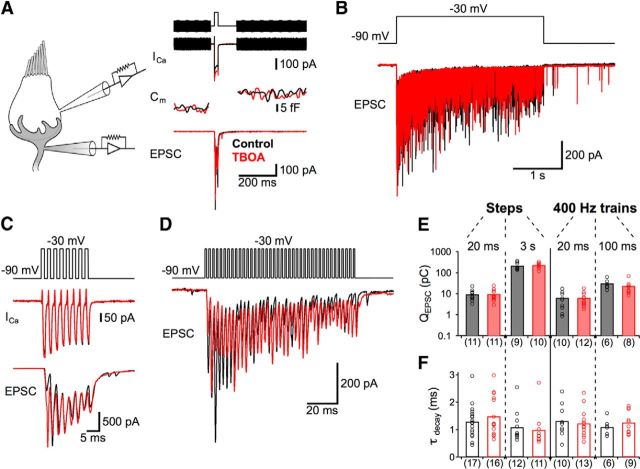Figure 2.
TBOA, a glutamate transporter blocker, does not significantly alter synaptic transmission at hair cell synapses. Recordings of EPSCs were made from postsynaptic fibers while the presynaptic hair cell (best frequency: ∼400 Hz) was depolarized from −90 mV to −30 mV in control conditions (black) and in the presence of TBOA (red). A, Representative traces of Ca2+ currents (ICa) and membrane capacitance (Cm) from presynaptic hair cells and EPSCs evoked by a single 20-ms-long voltage step. Capacitance was measured by superimposing a 1 kHz sine wave on the holding potential before and after the voltage step (top). B, A 3-s-long step elicited robust EPSC throughout the step duration. C, D, Postsynaptic responses to a 20 ms (C) and 100 ms (D) presynaptic train of 1 ms voltage steps at 400 Hz (totaling 8 steps or 40 steps, respectively). For both train protocols, EPSCs were elicited reliably and with few failures. E, F, Across all stimulation protocols (n = 6–17 pairs), no significant changes (unpaired t test) in average EPSC charge (QEPSC; E) or the time course of EPSC decay (τdecay; F) occurred with TBOA treatment (red bars) compared with control conditions (black bars).

